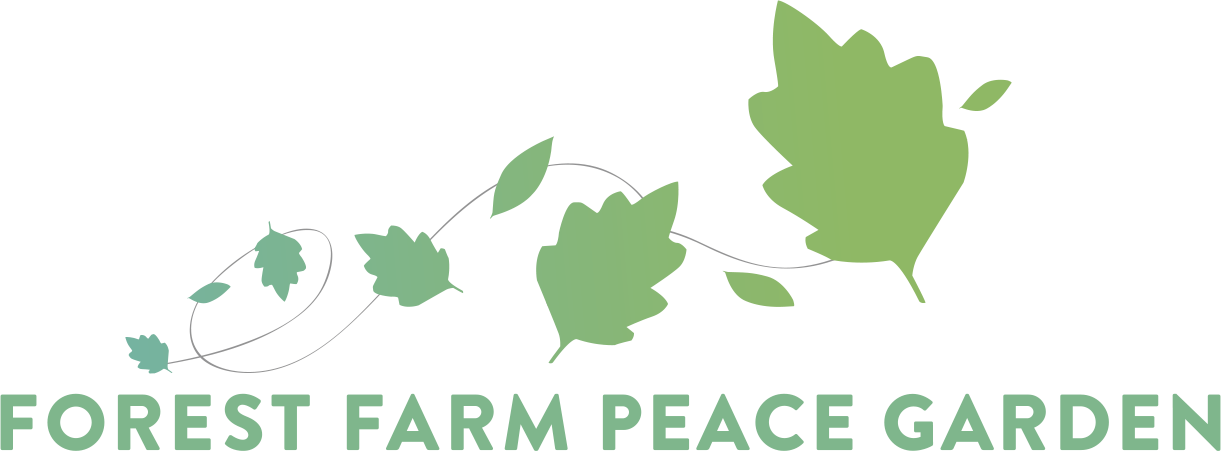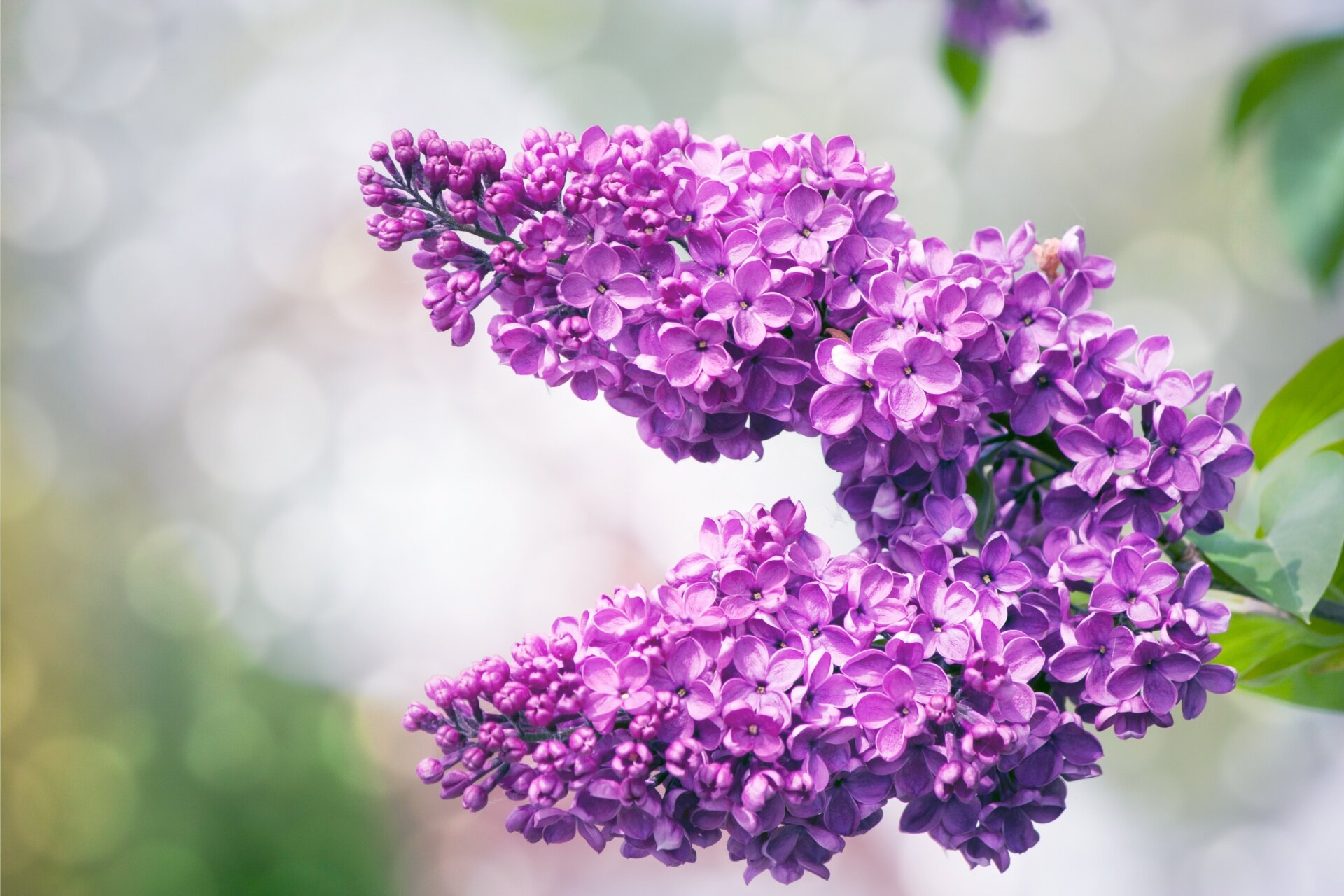Common Name: Lilac
Genus & Species: Syringa vulgaris (L.)
Family: Oleaceae
Other Names: Common Lilac, French Lilac, Persian Lilac
Range and Habitat: Lilac is originally native to the Balkan peninsular where it occurs on rocky slopes and open woodland. The genus more widely occurs from the Dalmatian coast eastwards into western Asia, the Caucasus and Iran. It is often found in, and indeed regarded as an indicator of, ancient human habitation in these areas. It is also widely naturalised in North America where it occurs on woodland edges and riparian forest and in the UK it has naturalised in hedgerows, favouring conditions similar to hawthorns. Lilacs grow most successfully in well-drained soils, particularly those based on chalk.
Lilac blossoms
General ID: Lilac is a large deciduous shrub or small multi-stemmed tree, growing to 6–7m high. It often produces suckers (secondary shoots) from the base or roots, which over time may develop into a small clonal thicket. The bark is grey to grey-brown, smooth on young stems, longitudinally furrowed, and flaking on older stems. The leaves are simple, 4–12cm and 3–8cm broad, light green to glaucous, in a smooth spear to heart-like shape. They are arranged in opposite pairs or occasionally in whorls of three. The flowers have a tubular base to the corolla 6–10mm long with an open four-lobed apex 5–8mm across, usually lilac to mauve, occasionally white. They are arranged in dense, terminal panicles 8–18cm long and are intensely fragrant. The wild form has looser and smaller panicles than the numerous cultivated varieties. Flowers will brown quickly if damaged. The fruit is a dry, smooth, brown capsule, 1–2cm long, splitting in two to release the two-winged seeds.
For food… The primary culinary use of lilac comes from its fragrant flowers. These can be added directly to salads where they lend a bitter-floral note, dipped in batter and made into fritters. They can be crystallised and added to cakes, biscuits, pies or rice dishes. The flavour works well with almonds. They are an unusual addition to stuffing or chicken dishes. They can be distilled into a syrup or infused in honey and this increases the versatility, being added to a range of desserts, drinks or yoghurt. Both the flowers and the leaves can be used to make a herbal tea.
For healing… The flowers have been used in herbal tea against helminths, malaria, sore throat and fever. The essential oil is applied to the skin for the treatment of various skin problems as rashes, burns and wounds. In aromatherapy the essential oil is recommended to patients who suffer from chronic depression and anxiety, while in folk medicine is recommended the chewing of the leaves against dyspepsia, flatulence, diarrhoea and rheumatism and sore throats. The plant is said to be an antiperiodic (preventing recurrence of illness), febrifuge (fever-reducing) and vermifuge (expelling worms). Flowers added to a hot bath are said to be relaxing and good for the skin. Indeed, the essential oil is also said to reduce the signs of fine lines and wrinkles.
In culture… The genus name Syringa is derived from Ancient Greek word syrinx meaning "pipe" or "tube" and refers to the hollow branches of S. vulgaris. These are also some of the candidates for the original ‘pan-pipes’ used by the Graeco-Roman god Pan. The English common name "lilac" is from the French lilac via the Arabic "lilak" from Persian "nilak" meaning "bluish", a reference to the flowers. Indeed the word for the colour lilac is derived directly from the pinkish-purple tones of the flowers.
The wood of lilac is close-grained, diffuse-porous, extremely hard and one of the densest in Europe. The sapwood is typically cream-coloured and the heartwood has various shades of brown and purple. Lilac wood has traditionally been used for engraving, musical instruments, knife handles etc. When drying, the wood has a tendency to be encurved as a twisted material, and to split into narrow sticks.
Lilacs are often considered to symbolize love and in its native Greece, Lebanon, and Cyprus, the lilac is strongly associated with Easter time because it flowers around that time; it is consequently called paschalia.
In contrast to many other plants introduced into northern European gardens at the end of the 16th century, lilac made its way from Ottoman gardens, not through the explorations of botanists and plant hunters. The Holy Roman Emperor's ambassador, Ogier Ghiselin de Busbecq, is generally credited with supplying lilac slips to Carolus Clusius, about 1562. The renown herbalist John Gerard noted that he had lilacs growing "in very great plenty" in 1597, but lilacs were not mentioned by Shakespeare, and John Loudon was of the opinion that the Persian lilac had been introduced into English gardens by John Tradescant the elder, a great naturalist, botanist and traveller from the late 1500’s. Tradescant's continental source for information on the lilac, and perhaps ultimately for the plants, was Pietro Andrea Mattioli, as one can tell from a unique copy of Tradescant's plant list in his Lambeth garden, an adjunct of his Musaeum Tradescantianum; it was printed, though probably not published, in 1634: it lists Lilac Matthioli. That Tradescant's "lilac of Mattioli's" was a white one is shown by Elias Ashmole's manuscript list, Trees found in Mrs Tredescants Ground when it came into my possession (1662): "Syringa alba".
Lilacs were introduced to American colonies in the 18th century. Peter Collinson, F.R.S., wrote to the Pennsylvania gardener and botanist John Bartram, proposing to send him some, and remarked that John Custis of Virginia had a fine "collection", which Ann Leighton interpreted as signifying "the entire range of lilacs possible" at the time.
Lilacs have become such a part of North American botanical culture, it is the state flower of the state of New Hampshire, because it "is symbolic of that hardy character of the men and women of the Granite State" and numerous states hold annual Lilac festivals, such as those in Rochester, New York which has been running since 1898, the ‘Lilac City’ of Spokane, Washington, ‘Lilac Village’ of Lombard, Illinois and ‘Lilac Sunday’ of Arnold Arboretum in Boston, Massachusetts. They have also formed part of US literary culture such as in the poem "When Lilacs Last in the Dooryard Bloom'd", by Walt Whitman, where lilacs are a reference to Abraham Lincoln.
In contemporary times lilacs are also gradually becoming popular bonsai specimens where it is loved for its flowers and multi-stem features.
For wildlife… Lilac’s fragrant, tubular nectar-rich flowers attract a range of long-tongued insects to feed. It is popular with hawkmoths and a range of butterflies. Birds will eat the fruit, and the RSPB note that lilacs are a popular choice for many garden birds to nest in. Squirrels will often strip the bark, although it is unknown why they do this. The leaves are a favourite of miners, and attract many of the same predators that commonly occur on their relatives Ash (Fraxinus sp.) and Privet (Ligustrum sp,)
At FFPG… Wild lilac can be found growing in the ethnobotany bed between the herb spiral and the ponds at FFPG
Disclaimer:
This is intended for information only. FFPG, its staff, trustees and volunteers do not make any claim as to the safety or efficacy of plants listed for medicinal purposes and do not encourage the consumption or use of any of the plants listed herein. Anybody wishing to use plants for medicinal effect is advised to consult their medical professional.


